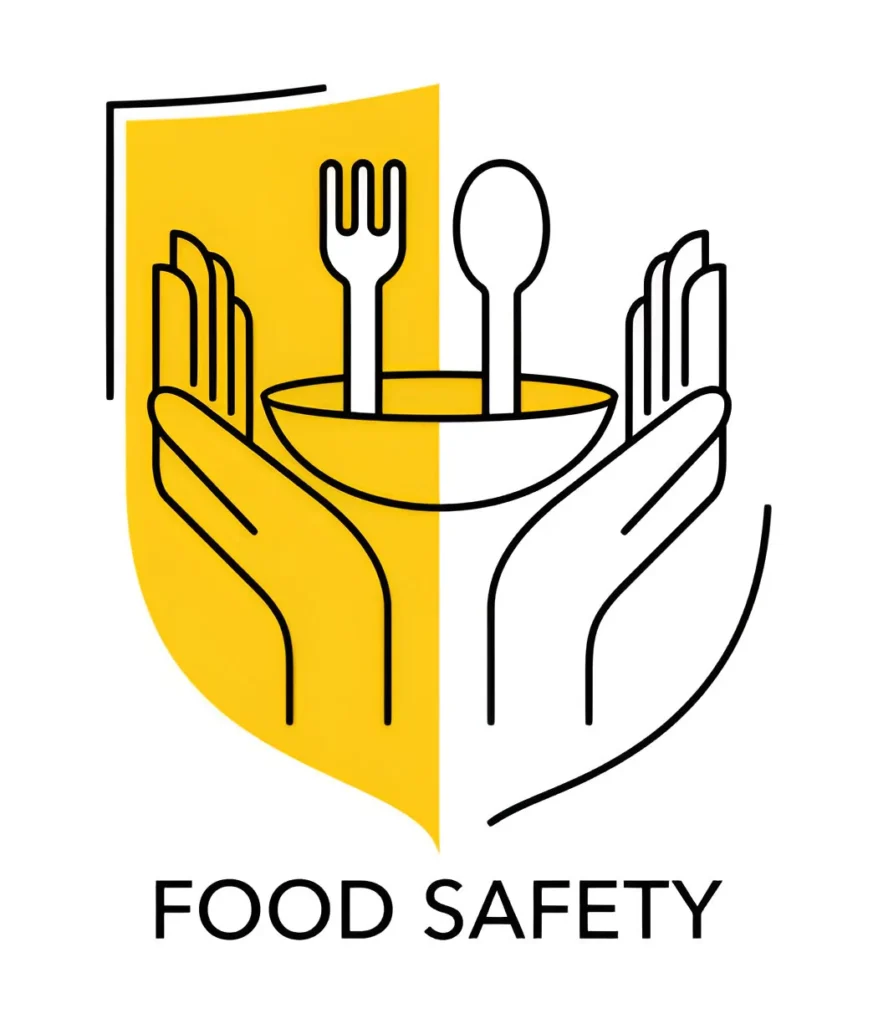Food safety is essential to ensure contamination-free, high-quality food. HACCP and ISO 22000 are two key frameworks that help businesses maintain food safety standards and comply with regulations. Here’s why they matter.
What Is a Food Safety Management System?
A food safety management system (FSMS) is a structured approach used by businesses in the food industry to identify, control, and prevent food safety hazards. These systems help organizations ensure food safety at every step of the supply chain, from production to distribution.
Two major FSMS frameworks are HACCP and ISO 22000. While both focus on managing food safety risks, each has distinct features designed for different contexts.
HACCP: The Backbone of Food Safety
HACCP (Hazard Analysis and Critical Control Points) is a globally recognized system that focuses on identifying and mitigating food safety risks. Developed in the 1960s, HACCP is widely used in food production, processing, and preparation to prevent biological, chemical, and physical hazards.
Key Principles of HACCP:
- Conduct a Hazard Analysis
Identify potential risks at every stage of food handling, including biological (e.g., bacteria), chemical (e.g., allergens), and physical (e.g., metal fragments) hazards.
- Identify Critical Control Points (CCPs)
Determine the specific points in the process where hazards can be controlled or eliminated.
- Set Critical Limits
Establish operational boundaries (e.g., cooking temperature limits) to control hazards effectively.
- Monitor CCPs
Implement monitoring procedures to ensure critical limits are consistently met.
- Take Corrective Action
Define steps to take when a critical limit is breached to prevent unsafe products from reaching consumers.
- Verify the System
Regularly assess the effectiveness of the HACCP plan through audits or testing.
- Maintain Records
Document all processes, monitoring results, and corrective actions for traceability and compliance.
HACCP is ideal for specific food production processes and facilities, focusing primarily on hazard prevention at critical points.
ISO 22000: A Comprehensive Food Safety Standard
ISO 22000 takes food safety to a broader level. It is an international standard that integrates HACCP principles with a management system framework. The goal of ISO 22000 is to ensure seamless food safety management across the entire food supply chain, from farms to forks.
What Sets ISO 22000 Apart from HACCP?
While HACCP is more process-specific, ISO 22000 applies a holistic approach to food safety management. It combines HACCP’s hazard prevention methodology with principles of quality management systems, like those found in ISO 9001, focusing on continuous improvement.
Key elements of ISO 22000 include:
- Risk Assessment: Similar to HACCP, it involves identifying and managing food safety risks.
- Leadership Commitment: Top management must play an active role in designing and implementing the system.
- Communication: Ensures clear communication across all stakeholders, including suppliers, distributors, and regulatory bodies.
- Continual Improvement: Encourages ongoing adjustments based on performance reviews and audits.
- Global Applicability: ISO 22000 is designed for businesses of all sizes and across the entire food supply chain.
Benefits of Implementing a Food Safety Management System
Implementing systems like HACCP or ISO 22000 offers numerous benefits for food businesses and consumers:
Reducing risks of contamination and ensuring high-quality standards leads to safer food products.
Both HACCP and ISO 22000 meet the requirements of international food safety laws, making it easier for businesses to comply with legal standards.
A robust FSMS demonstrates your commitment to food safety, building consumer confidence in your brand.
ISO 22000 certification opens doors in global markets by signaling adherence to international food safety standards.
By identifying and eliminating risks early, businesses can avoid costly recalls, lawsuits, and reputational damage.
Clear processes and ongoing systems review can streamline operations and reduce waste.
Choosing the Right System for Your Business
If you’re in the food industry, deciding which FSMS to adopt largely depends on your specific needs:
- Choose HACCP if you operate a food production or processing facility that needs targeted, detailed hazard prevention strategies.
- Consider ISO 22000 if you want a broader system that not only addresses food safety but also aligns with overarching business goals like quality management and supply chain integration.
Many businesses implement both systems, using ISO 22000 as the foundational framework with HACCP as the hazard analysis component.
Setting Up Your FSMS: Tips for Success
- Commit to Training: Educate employees about HACCP or ISO 22000 so they understand their roles in maintaining food safety.
- Evaluate Your Processes: Conduct a thorough review of your current practices to identify gaps and areas for improvement.
- Engage Experts: Partner with food and beverage regulatory consultants or food safety experts to guide you through system setup and certification.
- Leverage Technology: Use digital tools to streamline monitoring, documentation, and reporting.
- Conduct Regular Audits: Ensure your system remains effective through routine reviews and updates.
Conclusion
Food safety is the backbone of any successful food business. Systems like HACCP and ISO 22000 not only protect consumers but also empower businesses to operate more effectively and build trust. By prioritizing food safety and investing in robust management frameworks, you can set your organization apart in today’s competitive and regulation-driven market.
Read more: The Do’s and Don’ts of Bathroom Renovation Planning


